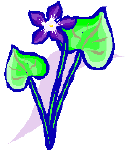|
|
|
|||||
|
|
||||||
|
||||||||||
|
Fast Growing Trees Fastest
Deciduous |
|
Faster
Deciduous |
|
Fast
Deciduous
Evergreen |
|
Fast Growing
Hedging Plants
Deciduous
Evergreen
Arborvitae
Douglas Fir |
|
Plants - Basics |
More about Fruit Trees: Apple and Crab-apples | Apricot | Cherry | Peaches and Nectarines | Pear | Plums and prunes | Pests and problems | Hints and tips |
|
|
Exclusion from a list therefore doesn't mean that a plant doesn't deserve it on merit. I've tried myself to buy plants from impressive looking planting lists and only been able to get a third or half of them easily (or not so easily for that matter).
Don't be put off by plants because their mature size is greater than you would like.
Most, especially trees take many years to get so big and you could enjoy them for this time before they outgrow your space and the felling axe needs to come out.
Also, plants can often be planted closer together in the early days than their ultimate size would imply, when they start to get crowded, then lift them and move them. Just make sure you keep the root ball as big as possible and do it in the winter when they are dormant. This is a better approach than having years where there are great open spaces between the plants while you wait (and weed) for them to meet in the middle.
So then, how exactly do we get the little green buggers to grow? The key is to learn to look at life from the plants point of view.
A bit
of basic biology;
![]() Plants get their food from sunlight. This is what powers them. If
Plants get their food from sunlight. This is what powers them. If![]() they don't get enough, they don't grow well or quickly, they flower less, fruit
less and are more susceptible to disease.
they don't get enough, they don't grow well or quickly, they flower less, fruit
less and are more susceptible to disease.
![]() Water is vital in the correct quantities. Plants get through water like
we do. Fortunately the soil that they are growing in acts as a reservoir for
water so they don't need regular cups of tea. Filling the reservoir three times
just makes it overflow and doesn't compensate for weeks with no water. If they stand
in water for too long, they get trench foot - some are more sensitive than others.
Water is vital in the correct quantities. Plants get through water like
we do. Fortunately the soil that they are growing in acts as a reservoir for
water so they don't need regular cups of tea. Filling the reservoir three times
just makes it overflow and doesn't compensate for weeks with no water. If they stand
in water for too long, they get trench foot - some are more sensitive than others.

![]() Plants compete with each other for light, water and nutrients. If planted
too close, then there will probably be a winner and a loser, or maybe just losers.
You can help however by feeding and watering more frequently. This is what happens
when plants are grown in containers such as hanging baskets and why containers are
not an option for the reluctant gardener.
Plants compete with each other for light, water and nutrients. If planted
too close, then there will probably be a winner and a loser, or maybe just losers.
You can help however by feeding and watering more frequently. This is what happens
when plants are grown in containers such as hanging baskets and why containers are
not an option for the reluctant gardener.
![]() Nature has produced the best competitors for any given environment. We tend
to refer to them as "weeds". These are the xenophobic hardy natives who try to ethnically
cleanse the area of our chosen interlopers.
Nature has produced the best competitors for any given environment. We tend
to refer to them as "weeds". These are the xenophobic hardy natives who try to ethnically
cleanse the area of our chosen interlopers.
![]() Nature, or parts of it regard many of our precious garden plants as in the category "Food".
Nature, or parts of it regard many of our precious garden plants as in the category "Food".
![]() Nature has designed plants to fit in a particular place in the world. We choose
them because we like the look of them. This is the most artificial reason there
could be. If in doubt go with nature and not against it. You wouldn't try
to harness a mongoose and plough a field with it or expect a dormouse to survive
in the Antarctic. We can get away with some strange things in the garden, but there's
a limit.
Nature has designed plants to fit in a particular place in the world. We choose
them because we like the look of them. This is the most artificial reason there
could be. If in doubt go with nature and not against it. You wouldn't try
to harness a mongoose and plough a field with it or expect a dormouse to survive
in the Antarctic. We can get away with some strange things in the garden, but there's
a limit.
![]() Depending on their origins plants have different degrees of hardiness, some
can withstand the wind, some can't, some can take cold, some can't. How they have
been grown can also affect their early months in your garden. A perfectly hardy
plant may have been raised in a polythene tunnel or greenhouse to bring it on quicker.
It will be like a London bond dealer expected to perform to the same standard in
a new job as a horny-handed son of toil. He will probably eventually get there but
not before suffering a lot first.
Depending on their origins plants have different degrees of hardiness, some
can withstand the wind, some can't, some can take cold, some can't. How they have
been grown can also affect their early months in your garden. A perfectly hardy
plant may have been raised in a polythene tunnel or greenhouse to bring it on quicker.
It will be like a London bond dealer expected to perform to the same standard in
a new job as a horny-handed son of toil. He will probably eventually get there but
not before suffering a lot first.
So plants need;

Light, Water,
Nutrients, Space, The right soil
conditions,
and ..... not to be beaten up, eaten, frozen or battered
by the wind.
If they aren't happy, then it's because one or more of these are wrong. Think about what it might be - look at it from the plants point of view.
Tips
![]() Do some local research, look around at what is in neighbors gardens.
Do some local research, look around at what is in neighbors gardens.
![]() You can't domesticate plants, if nature has decreed they will grow to such a
size, then they will, they won't know that you don't want them to.
You can't domesticate plants, if nature has decreed they will grow to such a
size, then they will, they won't know that you don't want them to.
![]() Plants that naturally grow on acidic soils won't survive on chalk and won't do so
well in neutral soil either. Rhododendrons, Camellias,
Azaleas & Heathers must be among the most frequently killed of all plants.
They look fabulous when they are sold in bud or flower, but they're all too often
planted in ordinary soil when their acid requiring (note not "loving"- that
implies optionality) needs condemn them to an early demise.
Plants that naturally grow on acidic soils won't survive on chalk and won't do so
well in neutral soil either. Rhododendrons, Camellias,
Azaleas & Heathers must be among the most frequently killed of all plants.
They look fabulous when they are sold in bud or flower, but they're all too often
planted in ordinary soil when their acid requiring (note not "loving"- that
implies optionality) needs condemn them to an early demise.
They may spend years hanging on hinting that they might just repeat that initial glory next year, but never actually do - Azaleas are particularly good at this.
![]() Keep an eye on your new acquisitions when they are first planted out. Coddle
them a bit. Water if needed, weed around them (you will have disturbed the soil
to plant them so weeds are more likely), make sure they're not crowded out and look
for signs of pests. You probably don't need to actually talk to them, but a bit
of attention for the new boy (or girl) can work wonders.
Keep an eye on your new acquisitions when they are first planted out. Coddle
them a bit. Water if needed, weed around them (you will have disturbed the soil
to plant them so weeds are more likely), make sure they're not crowded out and look
for signs of pests. You probably don't need to actually talk to them, but a bit
of attention for the new boy (or girl) can work wonders.
![]() Plant fragrant plants near to the house or alongside frequently used paths.
Fragrant plants are not usually the showiest and it is easy to forget about them
no matter how wonderful their perfume if they're out of immediate sight or are placed
at a distance. Place the scented plants nearby so that you enjoy them more and the
showier, but non-scented flowers further away where you can still appreciate them
without walking over to them.
Plant fragrant plants near to the house or alongside frequently used paths.
Fragrant plants are not usually the showiest and it is easy to forget about them
no matter how wonderful their perfume if they're out of immediate sight or are placed
at a distance. Place the scented plants nearby so that you enjoy them more and the
showier, but non-scented flowers further away where you can still appreciate them
without walking over to them.
|
|
|
About us. General queries and emails to |
|
Copyright © Paul Ward 2000 - 2012 |